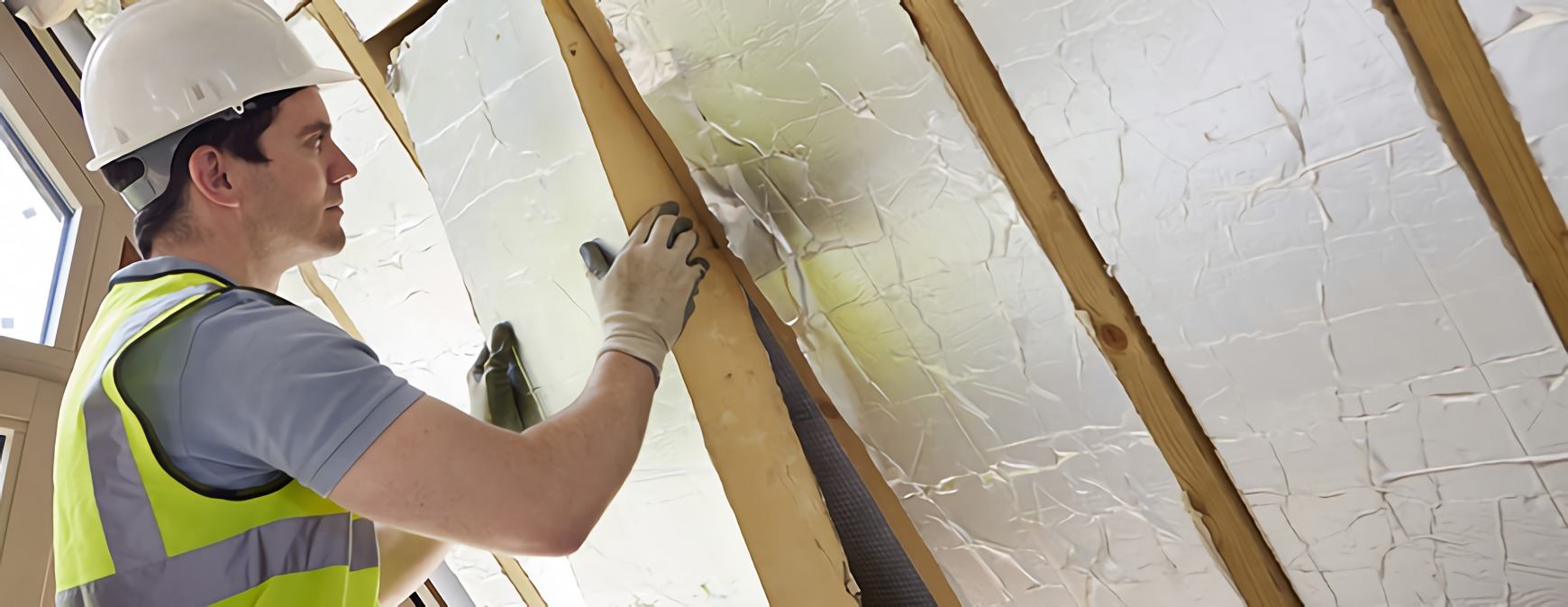RSI is a Great Training Option for Everyone
Learn more about how we can prepare you to advance your career.
A properly insulated home allows for efficient heating and cooling. It prevents the escape of warm air during the cold season and cool air throughout the summer months. Surprisingly, 90% of homes are under-insulated. 1
Whether you’re a homeowner, an HVAC technician, or still in AC and refrigeration school, knowing how to spot improperly insulated homes can help homeowners maintain comfortable indoor climates, save energy, and contribute to a cleaner environment.
Where to Seal & Insulate in the Home
Heating and cooling the home accounts for nearly 50% of the average homeowner’s utility bill. However, insulation isn’t located only in the walls; there are several areas throughout the home that need an extra layer or two.
Roof & Attic: Quality roof insulation can save as much as 20% of your energy bill. 2 Drafty rooms, dust, and high utility bills are indicators of a poorly sealed attic. Check insulation levels and look for air leaks. Attic insulation should be at least 11 inches of fiberglass or rock wool or 8 inches of cellulose. Homeowners can seal their own attics if they can access and comfortably move around in them; otherwise, they may want to hire a professional with technical training in this area to do the job. 3
Walls: The way your home is constructed determines the type of wall insulation that should be used. You may want to consultant an expert since wall insulation can reduce heat loss by over 65%. Saving money and improving comfort is a win-win situation.
Get Started on the Path to a New Career
Fill out our form to learn how we can help you change your life.
Floors: Floors that are under-insulated lose energy too. Part of this is because basements and crawl spaces that have poor insulation affect the temperatures of floors above them. Sealing air leaks and insulating basement walls can make a measurable difference in heating bills. This is a moderate to difficult DIY-project, so it may be better left to a professional.
Ductwork: Rooms that are hot in the summer and cold in the winter may be a sign of leaky ductwork which can reduce HVAC system efficiency by as much as 20%. Ducts located in places like the attic should be sealed and insulated. Sealing ducts does more than just save energy. The benefits include increased comfort, improved indoor air quality, prevention of carbon monoxide gases from being drawn back inside, saving money, and protecting the environment. 4
Poor Insulation Does Damage To Your Home
Air leaks not only waste energy but also damage houses, as they allow moisture to enter framing cavities, causing mold and rot. However, once leaks are sealed, it’s important to install a good ventilation system, as indoor air can have levels of pollutants 100 times higher than outdoor air. 5 Fortunately, ventilation is one of the benefits of a properly installed and maintained HVAC system.
Proper Insulation Saves More than Energy
Sealing and insulating your home not only saves energy, but also lowers utility bills, promotes comfortable indoor climates, and lowers your carbon footprint. However, insulation is just one component of an energy-efficient home. Maintaining HVAC equipment and installing a programmable thermostat—along with insulation—can save homeowners as much as 30% on their energy bills. 6
Additional Sources
1 – http://www.achrnews.com/articles/130732-naima-says-90-of-us-homes-are-under-insulated
2 – http://www.greenhomegnome.com/energy-loss-homes-insulation/
3 – https://www.energystar.gov/index.cfm?c=home_sealing.hm_improvement_attic
4 – https://www.energystar.gov/index.cfm?c=home_improvement.hm_improvement_ducts_benefits
5 – http://www3.epa.gov/air/basic.html
6 – http://energy.gov/energysaver/tips-heating-and-cooling
This blog has been labeled as archived as it may no longer contain the most up-to-date data. For a list of all current blog posts, please visit our blog homepage at https://www.rsi.edu/blog/




